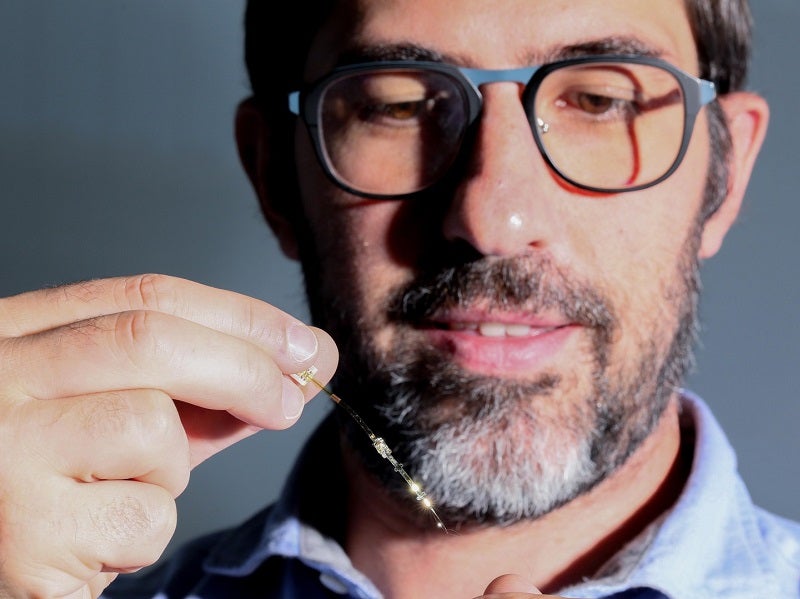
Researchers have developed a promising form of optic nerve stimulation that could help blind patients see light.
The technology, developed in a partnership between the École polytechnique fédérale de Lausanne (EPFL) in Switzerland and the Scuola Superiore Sant’Anna in Italy, bypasses the eyeball completely and sends messages to the brain.
Researchers made attempts to stimulate the optic nerve in the 1990s, with inconclusive results.
EPFL’s Medtronic chair in neuroengineering Dr Diego Ghezzi said: “Back then, they used cuff nerve electrodes. The problem is that these electrodes are rigid and they move around, so the electrical stimulation of the nerve fibres is unstable. The patients had a difficult time interpreting the stimulation, because they kept on seeing something different. Moreover, the cuff electrodes probably had limited selectivity because they recruited superficial fibres.”
The team’s technology stimulates the optic nerve with a new type of intraneural device called OpticSELINE. The array, which has been successfully tested in rabbits, was made up of 12 electrodes. A human OpticSELINE could consist of 48 to 60 electrodes.
OpticSELINE was able to stimulate the region of the animals’ brain where retinal information is processed. The device was programmed to simulate various fibres within the optic nerve, and the corresponding activity in the visual cortex was measured.
The researchers then developed an algorithm to decode the cortical signals, which showed that each stimulating electrode induced a different pattern of neural activity.
It is unclear what OpticSELINE alone could enable a visually impaired patient to see, but the researchers claim the results so far prove the technology’s potential. While the electrodes themselves are insufficient to entirely restore a patient’s sight, device could one day be engineered to work as part of a daily living aid.
Blindness is often caused by problems with the retina, but very few patients qualify for retinal implants. Optic nerve stimulation could work around problems with clinical accessibility, as most visually impaired patients’ neural pathways are still very much intact.
“For now, we know that intraneural stimulation has the potential to provide informative visual patterns,” said Ghezzi. “It will take feedback from patients in future clinical trials in order to fine-tune those patterns. From a purely technological perspective, we could do clinical trials tomorrow.”



